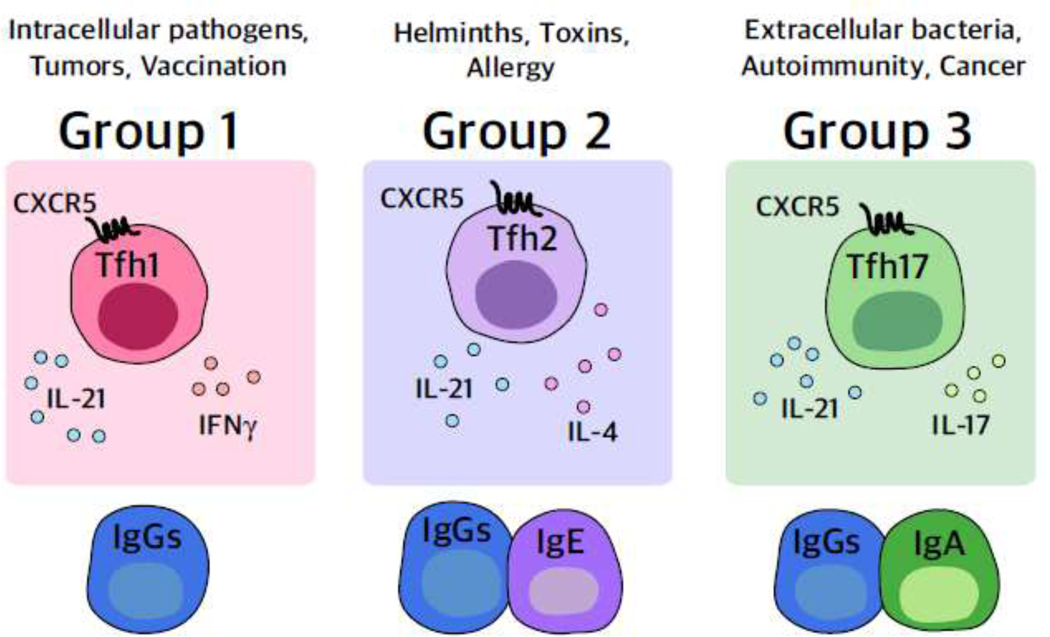Key Figure, Figure 2: Proposed unified groups of Tfh and Tfh-like cells.
The schema depicts the proposed members of each group with one representative “functional” Tfh cell shown expressing the classic Tfh-defining chemokine receptor CXCR5. Signature cytokines along with the canonical cytokine IL-21 are shown but represent the group members without indicating a static state. For example, IL-21 may be produced during particular time windows rather than continuously and other cytokines such as IL-4 may be expressed by cells of all groups but at lower amounts than group 2. Each group encompasses Tfh and Tfh-like cells that can function at different sites within SLOs as well as outside of SLOs, with the central theme of the group being the similar transcription factor and cytokine expression patterns. Cooperation of the group members ultimately results in the production of the types of antibodies depicted at the bottom of the image, as well as humoral immunity to the types of challenges listed at the top.

